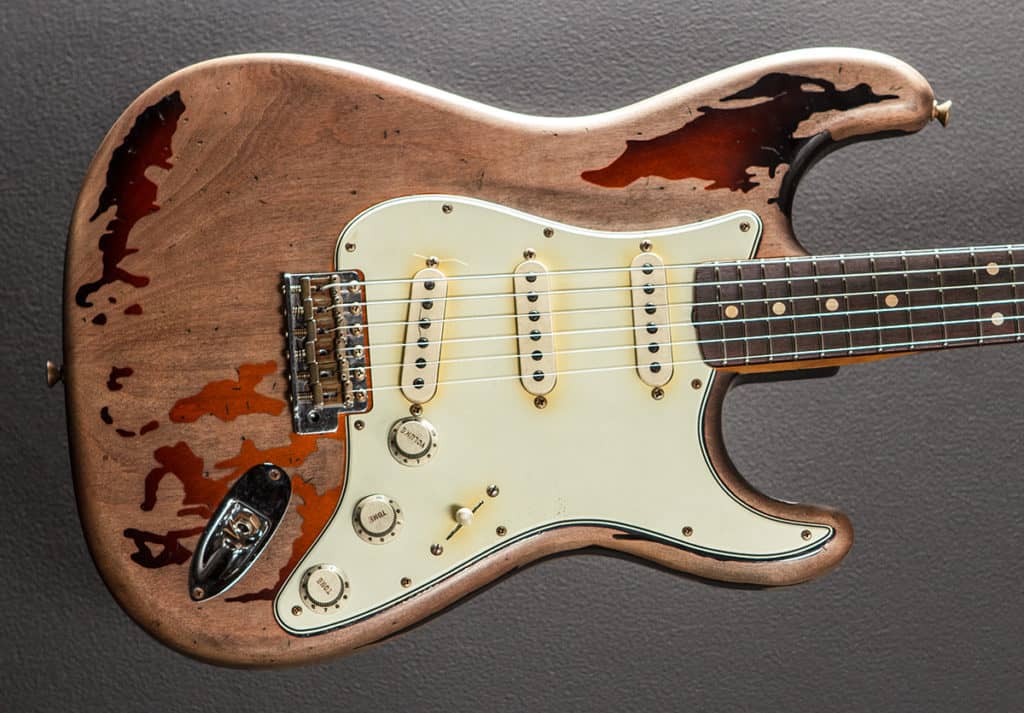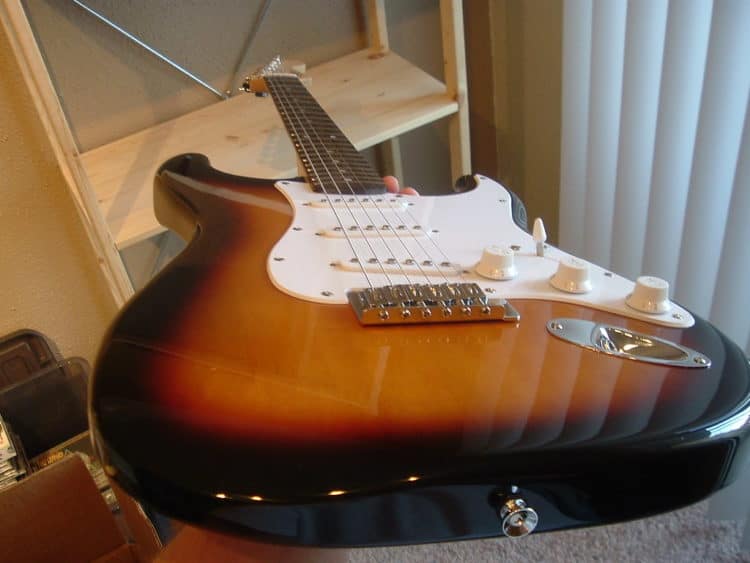The finish of a guitar is probably what first strikes us the most when drooling over a shop display window.
As you might know, there are 2 most common types of paint that are used in guitars, nitrocellulose, and polyurethane.
And as with many other things, there are crowds claiming that one is better than the other for different reasons.
But to just kick off things, and set a clear ground to build upon, let me answer the main question most people ask:
Does a guitar’s finish affect its tone? Here is a short answer:
A guitar’s finish will have a very mild effect in tone. Other factors such as tonewoods, pickups, and construction will have a way bigger impact. However, a lot of players will claim that there’s a noticeable difference from nitro finishes to poly ones since the former are thinner and improve resonance.
If you want to dive deeper into this topic, in this article I will talk about this in broader terms, and I will tell you how big the effect in the tone I think could be.
After that, I will give you a brief description of both of these popular types of paint.
Finally, I will answer the most pressing questions related to guitar paint and then I will give you my final conclusions and recommendations.
Are you ready to get started?
Let’s start!
Does a guitar’s paint affect its tone?
Every component in a guitar will have a varying impact on its final tone. Paint is not the exception. However, the magnitude of its effect is to be argued. Guitar finishes, further from a tonal modifier are there to provide aesthetic, prevent damage and stabilize the wood underneath it.
Tone, in my opinion, is created in a subtractive synthesis way. Anything you add that has direct or indirect contact with the strings will take some frequencies out from their “original” timbre.
This is what shapes the sound of a guitar. Think of it as an EQ filter.
However, if you compare the mass of wood with the mass of paint any guitar has, you could easily infer that the relative effect of both is going to be pretty dissimilar.
How much does a guitar’s finish affect its tone?
A guitar’s finish has an almost imperceptible effect on its tone. It would be, however, very hard to measure the difference effectively. The main influence of a different finish will be in the feel department. However, I would admit that perhaps a very thick layer of paint could take resonance away.
There are many components way more important than paint when defining the sound of a guitar, mainly being tonewoods, construction, and pickups.
Most common guitar finishes and their effects on tone
When it comes to guitar finishes there are 2 contenders that split opinions among guitarists.
Some will be neutral and say that the only differences between them are looks and durability.
Others will bet their houses on arguments about the different tonal impacts they have.
Here they are:
Nitrocellulose

Nitro is the oldest of the 2 most common finishes for guitars and has been around for almost a century now. It was even used in cars. Nitrocellulose is porous, thin, and slippery. It wears off faster, and some people claim that it makes the guitar sound more open and have extra sustain and resonance.
Polyurethane

Poly is a modern alternative that became the industry standard since it’s safer to work with and quicker to apply. Polyurethane finishes are a lot thicker and stronger than nitro. It doesn’t crack as easily and will probably look new for decades. However, some people claim it reduces resonance and sustain.
Nitro vs poly, which one sounds better?
The consensus among players is that nitro finishes sound better since they are thinner and have an almost null effect on the wood’s natural resonance. I will argue that its less glossy feel is also a big factor since it allows the player to have more contact with the actual texture of the woods below.
The differences will probably be rather small between the 2, however.
Do relic guitars sound better?
Relic guitars are mostly finished with nitrocellulose since it wears off and crackles easily. For many players, less paint or a thinner coating will mean more space for the woods to breathe, and hence improved resonance and sustain. This is probably true, but not as impactful as it sounds.
Don’t get me wrong, there will be a difference, but as I said earlier there are factors that have a bigger impact on tone.
However, when everything else is said and done, and the only variable left to determine your dream’s guitar tone is its finish, the argument for worn-off nitro over poly will be really valid.
Conclusion and recommendations
Whether you are looking for a new guitar or planning on building or having one built, getting to know, at least at a high level how guitar paint works is, in my opinion, something that will help you make a better informed final decision.
However, here in GearAficionado, I always say that you should try out every instrument before buying it if you have the chance.
If it’s within your reach, try to get to play completely different guitars to clearly understand where the variation lies, and then start checking out ones closer to the one you preferred the most.
The rule of thumb is that poly finishes tend to be thicker and look more “plasticky” while nitro paint is frailer and tends to wear off and damage faster.
Finally, don’t forget to have fun. Technicalities for some people get the joy out of getting a new piece of gear. You don’t have to know it all about something that makes you smile. Just go and play the instrument that feels best to you.

Hello there, my name is Ramiro and I’ve been playing guitar for almost 20 years. I’m obsessed with everything gear-related and I thought it might be worth sharing it. From guitars, pedals, amps, and synths to studio gear and production tips, I hope you find what I post here useful, and I’ll try my best to keep it entertaining also.





